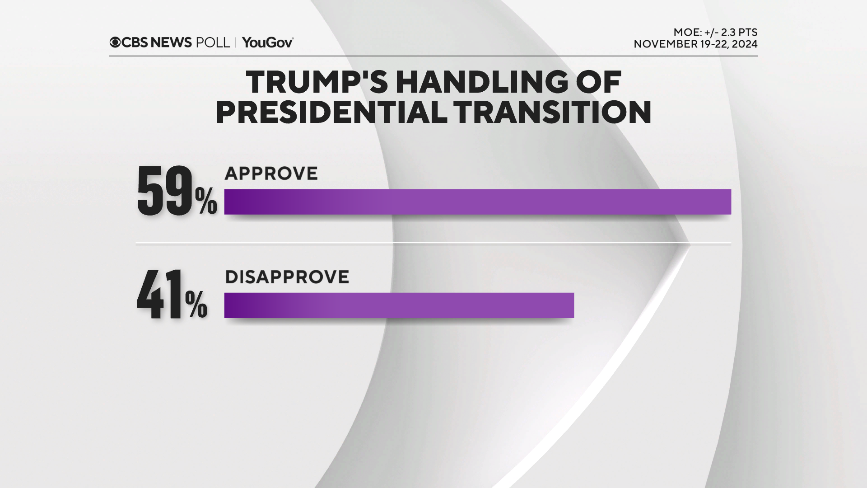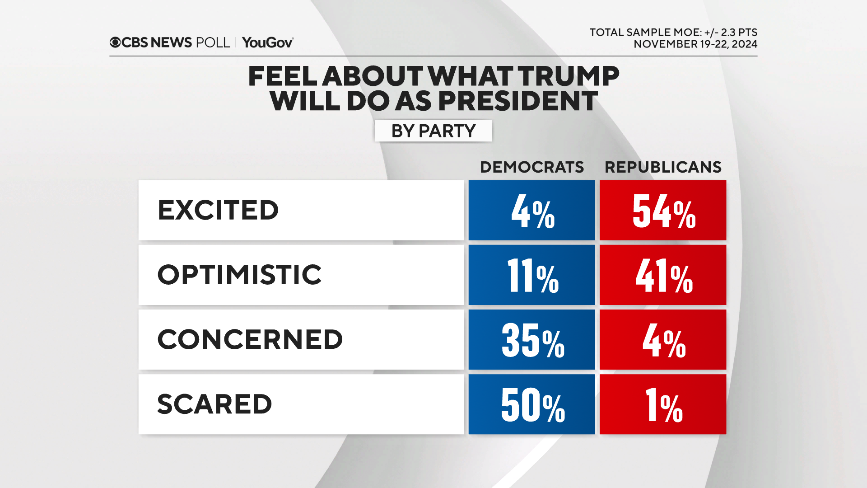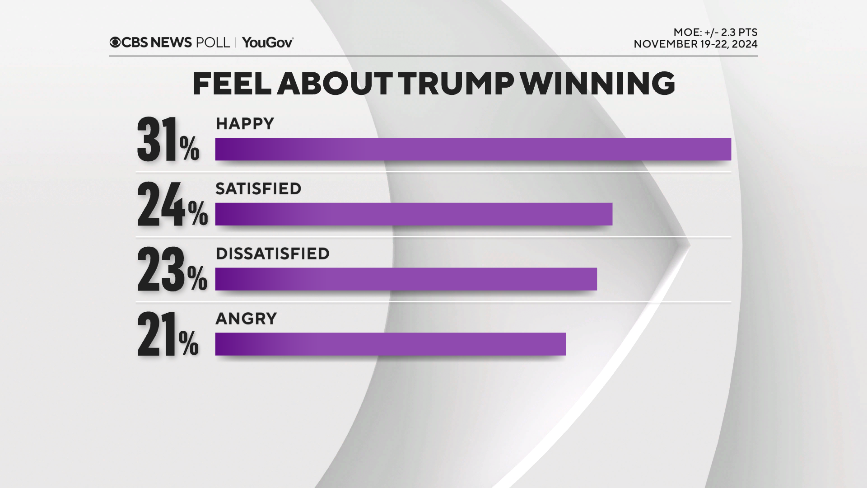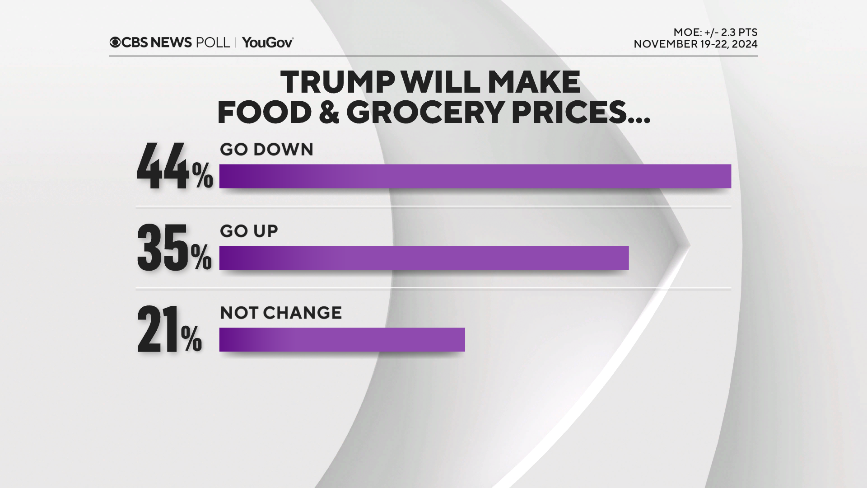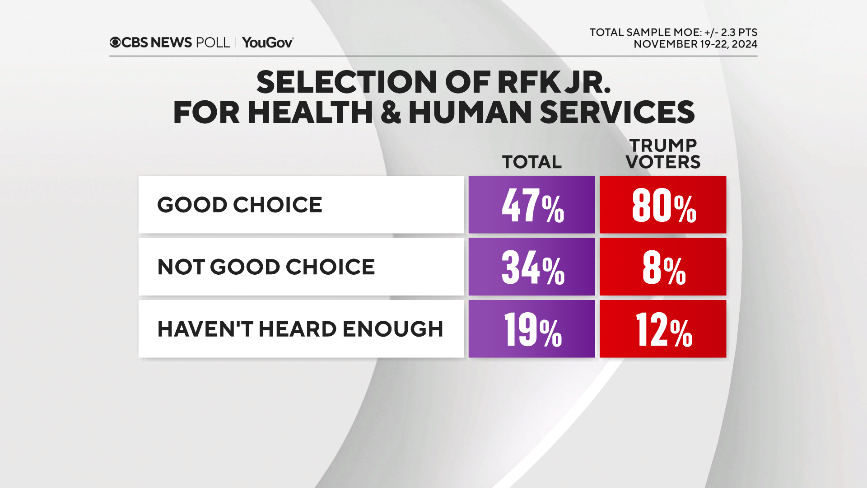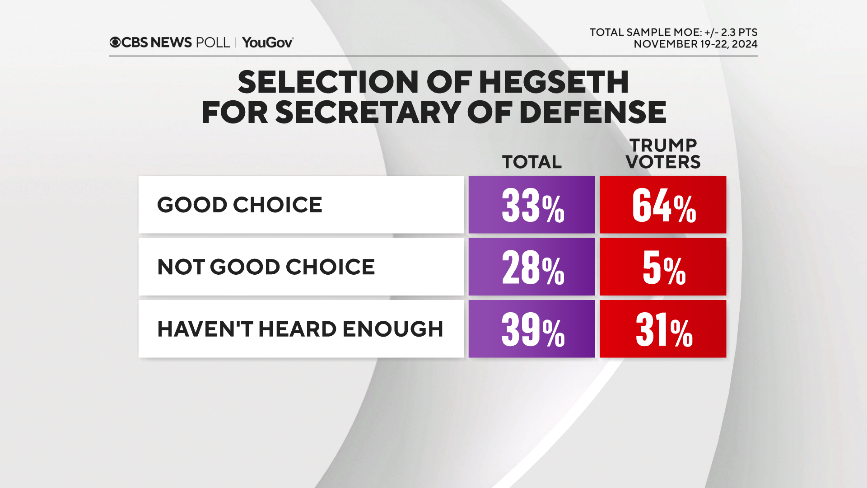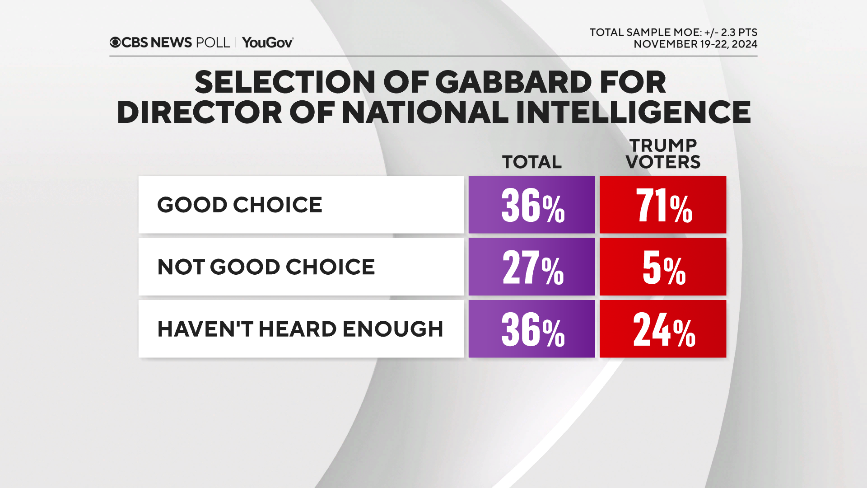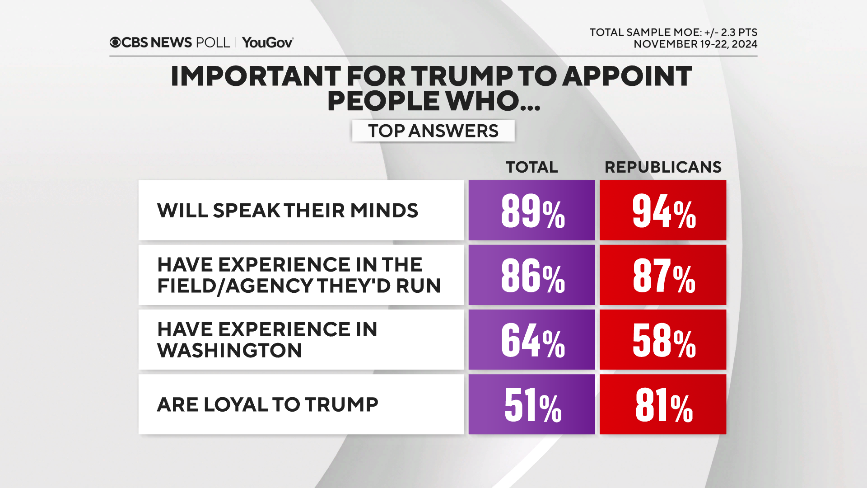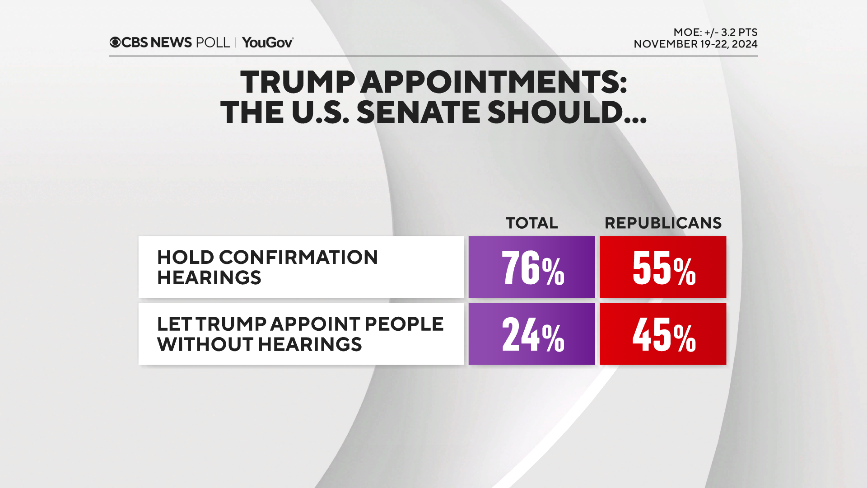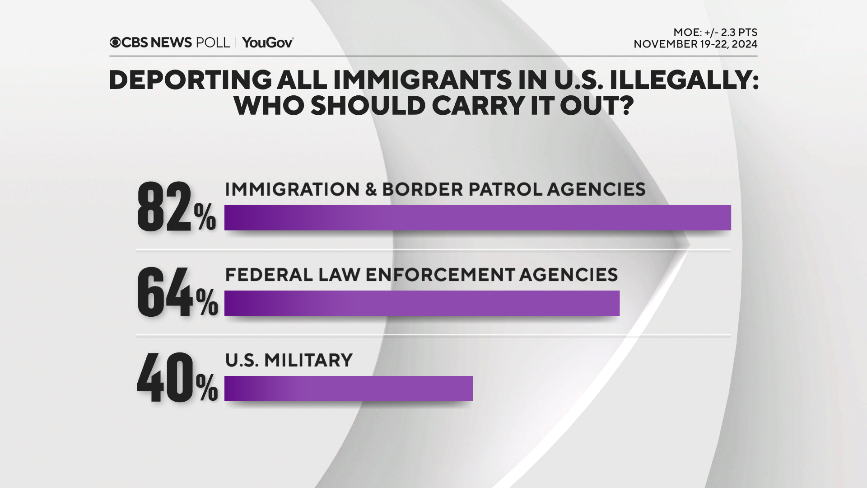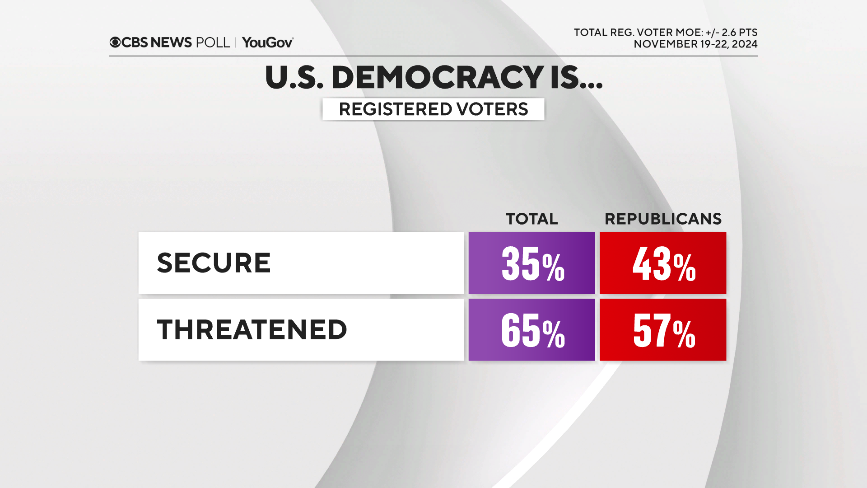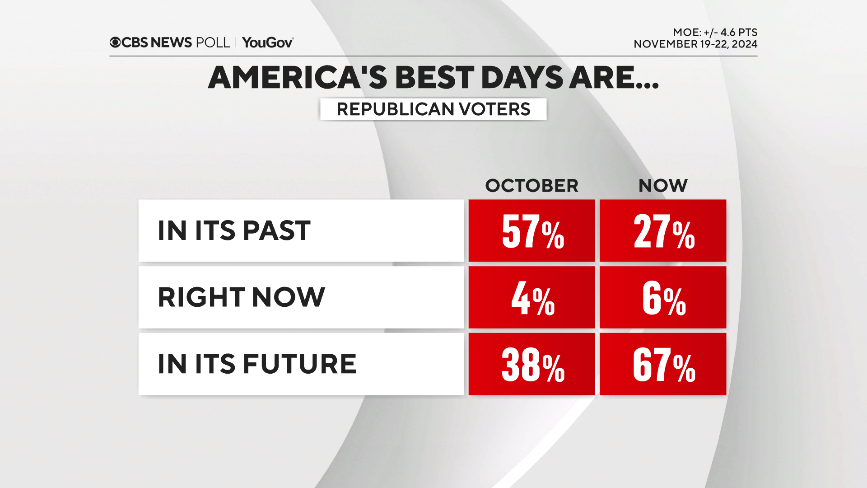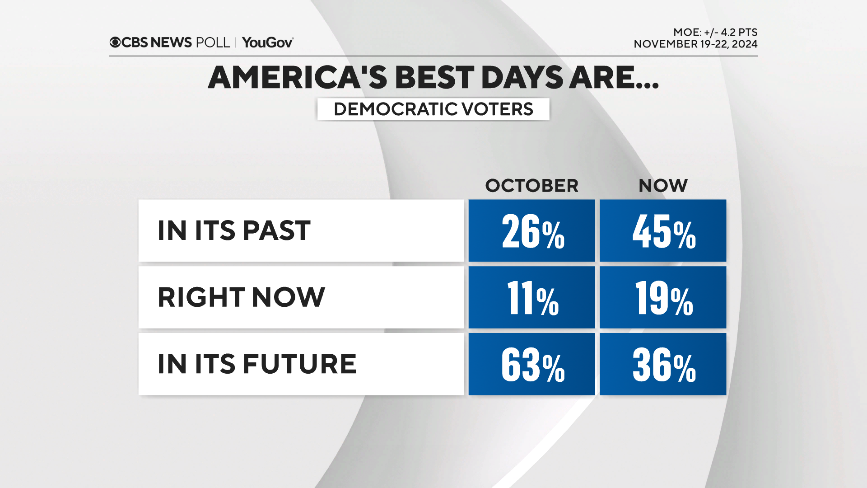CBS News
Illegal crossings at U.S.-Mexico border fall to 3-year low, the lowest level under Biden

Illegal crossings along the U.S. southern border fell to a 3-year low in June following President Biden’s drastic move to curtail asylum and continued efforts by Mexico to stop migrants heading north, according to preliminary Customs and Border Protection data obtained by CBS News.
Border Patrol processed approximately 84,000 migrants who crossed the U.S.-Mexico border without authorization in June, the lowest monthly level since Mr. Biden took office in January 2021, when the agency reported just over 75,000 migrant apprehensions, the internal statistics show.
June’s migrant apprehension tally was also the fourth consecutive monthly drop, continuing an unexpected downward trend in illegal border crossings that started in the early spring. Border Patrol agents recorded 118,000 migrant apprehensions in May; 129,000 in April; 137,000 in March; and 141,000 in February, according to public government figures.
Migrant crossings dropped across border regions, including in remote and rugged stretches of Arizona and California that had become the busiest sectors for illegal entries.
The marked reduction in migration comes weeks after Mr. Biden invoked a presidential power frequently cited by the Trump administration to ban most migrants from asylum if they crossed into the U.S. between official border crossings, known as ports of entry.
The asylum crackdown — which includes exemptions for unaccompanied children and those who wait in Mexico for a chance to be processed at a port of entry — has allowed U.S. immigration officials to more quickly deport larger numbers of migrants, mainly those from Mexico and other countries in Latin America.
Qian Weizhong/VCG via Getty Images
The sustained decrease in unauthorized border entries has also occurred against the backdrop of a months-long campaign by Mexican officials to slow U.S.-bound migration by carrying out more deportations to southern Mexico and preventing migrants from boarding trains and buses. The aggressive operation began after a meeting between top American and Mexican officials in December, when migrant apprehensions at the U.S. border reached a quarter of a million, a record.
Beyond U.S. and Mexican policies, other factors also influence migrant migration, including weather patterns and tactics by smugglers, who control the movement of migrants in many parts of Mexico. Temperatures along the U.S. border, for example, have increased rapidly and are expected to continue climbing further into the summer.
Senior U.S. officials told CBS News the partial asylum ban is the main driving force behind the steep decline in crossings. One official noted the drop has been more acute since the crackdown was announced on June 4. In the past week, the average of daily migrant apprehensions fell below 2,000 — or nearly half of May’s 3,800 average, internal CBP data show. That number is also close to the 1,500 threshold the Biden administration set to suspend the asylum restrictions.
“The numbers have been going down before the presidential announcement, but they went down a lot more afterwards, so I think you have to give some credit to that,” said Andrew Selee, president of the Migration Policy Institute, a Washington-based non-partisan think tank. “We have to assume, if nothing else, that in the short term it has dissuaded some people.”
Under the sweeping policy change, U.S. officials have been returning and deporting thousands of migrants to Mexico or their home countries on a weekly basis without screening them for asylum. Only those who affirmatively say they fear being harmed if deported are being screened. But even then, those migrants are being interviewed using heightened screening standards for lesser-known protections that, unlike asylum, do not provide permanent legal refuge.
Asylum processing at ports of entry has continued under Mr. Biden’s proclamation. U.S. border officials have continued to process and admit roughly 1,500 migrants each day at these legal entry points, using a smartphone app known as CBP One to coordinate their arrivals.
The stricter asylum rules have led to a 60% decrease in migrant releases, which U.S. officials have historically viewed as a pull factor that attracts migration, officials said. Migrants who are released are generally able to live and work in the U.S. for years, regardless of whether their asylum claims ultimately prevail, because of how backlogged the immigration courts are.
Still, U.S. officials concede Mr. Biden’s proclamation is not a silver-bullet. The move, for example, has had a more limited impact on migrants from far-flung countries in the Eastern Hemisphere, such as China and parts of Africa, where the U.S. does not carry out regular deportations. Migrants from these countries are still banned from asylum under Mr. Biden’s executive action, but some of them are still being released into the U.S. because they cannot be sent back home or Mexico due to diplomatic or operation constraints.
Mr. Biden’s asylum order is also in legal peril. The American Civil Liberties Union filed a lawsuit against the policy in federal court, arguing it violates U.S. asylum law and increases the chances of American officials sending migrants back to places where they can be harmed. At the request of the ACLU, federal courts blocked a similar Trump-era asylum ban.
While it’s unclear whether it will continue in the coming months, the migration lull is a political reprieve for Mr. Biden ahead of his presidential contest in November with former President Donald Trump, who has again made a immigration a pillar to his White House bid.
Immigration ranks among the worst-polling issues for Mr. Biden, whose administration has faced an unprecedented influx in migrant crossings along the southern border. And despite the steady drop in illegal border crossings, Trump has intensified his attacks on Mr. Biden’s immigration record.
In last week’s debate, Trump cited heinous crimes allegedly committed by migrants living in the country illegally, faulting Mr. Biden for their release into the U.S. During the campaign, Trump has promised to oversee the largest deportation operation in U.S. history and end birthright citizenship for the children of unauthorized immigrants if elected.
CBS News
Good enough to eat: Noah Verrier’s paintings of comfort food

Watch CBS News
Be the first to know
Get browser notifications for breaking news, live events, and exclusive reporting.
CBS News
A study to personalize nutrition guidance just for you

Watch CBS News
Be the first to know
Get browser notifications for breaking news, live events, and exclusive reporting.
CBS News
CBS News poll finds Trump starts on positive note as most approve of transition handling

President-elect Donald Trump’s incoming administration starts off with mostly good will from the public: a majority of Americans overall are either happy or at least satisfied that he won and are either excited or optimistic about what he’ll do as president.
Trump’s handling of his presidential transition gets approval from most Americans overall and brings near-universal approval from his voters, along with a net-positive response about his selections for Cabinet posts, in particular, Sen. Marco Rubio, who is Trump’s pick to be secretary of state.
After inflation and the economy so dominated the election, Americans are more inclined to think his administration will bring down prices for food and groceries rather than raise them, and his voters overwhelmingly say that. Going into the election, his backers expected that, too.
In a similar vein, Trump’s election already has some Republicans’ views of the economy improving.
Overall, Republicans today are more excited about what Trump will do as president now than they were in 2016 when he was first elected.
Democrats say they feel more scared about what Trump might do than they did in 2016, and a large majority of Democrats think as president he will threaten their rights and freedoms. But at the same time, there seems to be a sense of exhaustion, as fewer than half of Democrats feel motivated to oppose Trump right now.
Americans, and Democrats specifically, do think the Biden administration should work with the incoming Trump administration to ensure a smooth transition, and that congressional Democrats should work with Donald Trump on issues where they find common ground.
Trump and the economy
After winning comes expectations. There’s a net optimism about the incoming administration’s effect on food and grocery prices, especially among Trump’s voters. That comes as most Americans continue to say prices are currently rising. And inflation was a big factor in Trump winning in the first place.
It may be no surprise then that among many potential items for the incoming administration, Americans say plans to lower prices ought to be the top priority.
The percentage of Republicans who call the U.S. economy good, while still low, has gone up, as the percentage who call it very bad has dropped. That pushes voters’ overall evaluation of the economy slightly higher than it’s been this year — and further spotlights how much partisanship, along with optimism, always plays into these evaluations.
Trump selections of Cabinet and agency chiefs for his administration
Trump’s current selections for agency heads and Cabinet picks get rated overwhelmingly as good choices from Trump’s voters, and are net-positive as selections among Americans who have heard enough about them to say. (Many have not heard enough yet.)
As a general rule, Americans want Trump to appoint people who’ll speak their minds and who have experience in the field or agency they’ll run. But in addition to those qualities, Republicans also want people who’ll be loyal to Trump.
A large majority of Republicans and Trump voters think Elon Musk should have at least some influence in the Trump administration. Americans overall are more split on that, largely along partisan lines.
Big majorities of Americans — and a slight majority of Republicans — would like to see the Senate hold hearings on his nominations, rather than let him make those appointments without it.
(Within self-identified Republicans, MAGA Republicans are relatively more inclined to say the Senate should skip the hearings.)
That sentiment holds whether or not people are told or reminded that the Constitution says the Senate should give advice and consent.
As a general matter, though, most of Trump’s voters and most Republicans do want Trump to have more presidential power this term than he did in his last. That sentiment is higher among Republican voters now than during the campaign.
Trump policies
On another economic front, Trump’s voters overwhelmingly favor the idea of tariffs: most of them don’t believe that will make prices higher. (For the third who believe tariffs will raise prices but support them anyhow, this is presumably a cost they’re willing to bear.)
For the public overall, opposition to tariffs goes hand in hand with the belief they’ll lead to higher prices.
As was the case with voters throughout the campaign, most Americans would, in principle, approve of a new mass deportation program.
If the Trump administration does start a mass deportation program, most of the public would have it carried out by law enforcement or current immigration agencies — most would not have the U.S. military do it.
Elections and democracy
The 2024 results have shifted Republicans’ views of U.S. democracy and also returned some confidence to their view of U.S. elections. Few Republicans suspect fraud in 2024. They overwhelmingly did about 2020.
Following Trump’s victory, there’s been an increase in the number of Republicans who say democracy and rule of law is secure, though most Americans continue to say it is not.
Looking ahead, there’s another shift along partisan lines. Throughout the campaign, Republicans said America’s best days were in its past, while Democrats felt they were in the future. These views are reversed now. After Trump’s win, most Republicans feel America’s best days are in its future.
This CBS News/YouGov survey was conducted with a nationally representative sample of 2,232 U.S. adults interviewed between November 19-22, 2024. The sample was weighted to be representative of adults nationwide according to gender, age, race, and education, based on the U.S. Census American Community Survey and Current Population Survey, as well as 2024 presidential vote. The margin of error is ±2.3 points.




